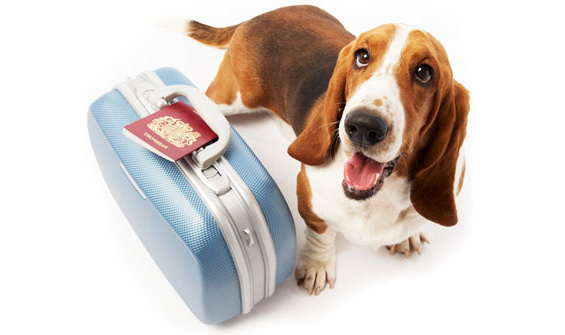Have your microchipped and vaccinated your pet?
According to all international standards and procedures, you have to fit your pet with a microchip. This tiny device will be inserted under its skin and will be attributed a number that will appear on all the medical and identity documents relating to you pet. This microchip will have to comply with two ISO standards, i.e. 11784 and 11785 which, as despite being somewhat controversial, still apply worldwide. The European regulations, on the other hand, also provide that the animal may also be identified by means of a clearly decipherable tattoo if applied before 3 July 2011.
Apart from being microchipped, your pet also needs to be vaccinated. Anti-rabies vaccine is the universal immunization procedure. However, you should make some research to see whether you also need to make some additional vaccines. It all depends on your destination. For example, if you travel to UK with a dog, it has to pass a rabies blood test as early as six months before arrival. Furthermore, you also have to treat your Fido for tapeworms and ticks one day before you depart.
Last but not least, your veterinarian is the one to decide whether your pet is on top form to travel. Some dogs, for example (such as the Boston Terriers) aren’t too able-bodied to fly simply because of the anatomy. To be more specific, they will have difficulties to breathe and your vet will have to issue an Airline Veterinary Health Certificate. This certificate is required by the majority of the carriers, so it is a wise idea to call the airline first and check what health related documents you need for your pet.
Is your pet the right age to travel?
The USDA ‘s regulations stipulate that your Fido needs to be older than eight weeks old. What is more, it also has to be weaned previous to setting off on an airplane journey.
Have you arranged everything well before departure?
You should think about making the necessary arrangements for your pet as soon as you book your ticket. It is not too early. So, the moment you book your ticket, do consider calling the airline to inform them that you’re planning to travel with your pet. Furthermore, make sure that you phone the carrier again and RECONFIRM that you’re planning to take a pet aboard the plane, with 24-48 hours before departure. It is important to notify them at least 24-48 hours in advance because they may carry only a limited number of animals.
It is the more important in case you are not able to go together with your pet because you’ll have to make all the necessary preparation to guarantee a safe flight for your pet. Do also bear in mind that if the crate is not appropriate or your pet is ill or there are extreme weather conditions at either or both departure, transfer or destination airports, the airline may refuse to have your pet aboard. The best thing, however, is to use a DIRECT FLIGHT and to AVOID BUSY DAYS. Besides, in case of extreme temperatures, you may be required to have an Acclimation Certificate for your pet. The airlines will sort this out for you.
Have you purchased the appropriate kennel?
You will know whether you own the appropriate kennel for your pet if it complies with IATA regulations. These rules standardize the size of the crate your pet needs to be transported into. The kennel has to be robust and correctly ventilated. It also needs to be big enough so that your pet will be able to stand without restraint, turn around, and laze. In addition, the crate must be equipped with a secure opening and closing mechanism and with ventilation outlets which cannot be blocked by neighbouring crates or freight.
You need to buy your pet’s kennel well in advance and to start ACCLIMATING it a few months before the flight. Pets need to get accustomed to their temporary accommodation so that they are not to stressed during the journey.
Moreover, do consider the following additional questions when setting off to the airport:
- Is your name and address written clearly on the crate?
- Have you used stickers that indicate the upper part of the crate?
- Have you also put labels that read LIVE ANIMALS?
- Have you given your pet food and water four hours before departure?
- Have you put empty food and water dishes secured inside the crate and are these bowls easily reached from the exterior?
- Have you placed, if needed, a feeding timetable alongside with supplies on the outside of the kennel?
Finally, have an ENJOYABLE and SAFE flight with your most precious friend.

 En
En Es
Es Fr
Fr











